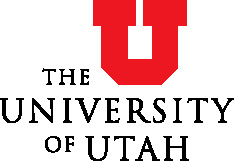Minimization of Bleeding Related Adverse Drug Events in Plastic & Reconstructive Surgery
| Status: | Recruiting |
|---|---|
| Conditions: | Cardiology, Cardiology, Cardiology, Cardiology, Cardiology, Cosmetic |
| Therapuetic Areas: | Cardiology / Vascular Diseases, Dermatology / Plastic Surgery |
| Healthy: | No |
| Age Range: | 18 - Any |
| Updated: | 10/21/2018 |
| Start Date: | July 3, 2017 |
| End Date: | September 30, 2019 |
| Contact: | Christopher Pannucci, MD |
| Email: | christopher.pannucci@hsc.utah.edu |
| Phone: | 8015817719 |
Minimization of Bleeding Related Adverse Drug Events in Plastic & Reconstructive Surgery Patients Randomized to Different Postoperative Anticoagulant Regimens
Plastic and reconstructive surgeons consistently create large, raw surfaces as part of their
operative procedures. Thus, plastic & reconstructive surgery patients are among those at
highest risk for anticoagulant-associated bleeding adverse drug events (ADEs). This study
seeks to optimize both the safety and effectiveness of post-operative enoxaparin by comparing
aFXa levels, bleeding events, and VTE events among plastic & reconstructive surgery patients
randomized to receive two different enoxaparin dose regimens.
operative procedures. Thus, plastic & reconstructive surgery patients are among those at
highest risk for anticoagulant-associated bleeding adverse drug events (ADEs). This study
seeks to optimize both the safety and effectiveness of post-operative enoxaparin by comparing
aFXa levels, bleeding events, and VTE events among plastic & reconstructive surgery patients
randomized to receive two different enoxaparin dose regimens.
Plastic and reconstructive surgeons consistently create large, raw surfaces as part of their
operative procedures. Thus, plastic & reconstructive surgery patients are among those at
highest risk for anticoagulant-associated bleeding adverse drug events (ADEs). Our
preliminary data has shown that a fixed, or "one size fits all" dose of enoxaparin, an
anticoagulant, can allow a high proportion of patients to have appropriately thinned blood,
measured by anti-Factor Xa (aFXa) levels. Patients with adequate aFXa levels are known to
have significantly decreased venous thromboembolism risk (VTE), which is desirable. However,
30% of patients who receive fixed dose enoxaparin have blood that is too thin. Patients who
are over-anticoagulated are significantly more likely to have ADEs including bleeding
requiring return to the operating room, need for blood transfusion, or death. The optimal way
to dose enoxaparin to minimize ADEs remains unknown. This study seeks to optimize both the
safety and effectiveness of post-operative enoxaparin by comparing aFXa levels, bleeding
events, and VTE events among plastic & reconstructive surgery patients randomized to receive
two different enoxaparin dose regimens.
operative procedures. Thus, plastic & reconstructive surgery patients are among those at
highest risk for anticoagulant-associated bleeding adverse drug events (ADEs). Our
preliminary data has shown that a fixed, or "one size fits all" dose of enoxaparin, an
anticoagulant, can allow a high proportion of patients to have appropriately thinned blood,
measured by anti-Factor Xa (aFXa) levels. Patients with adequate aFXa levels are known to
have significantly decreased venous thromboembolism risk (VTE), which is desirable. However,
30% of patients who receive fixed dose enoxaparin have blood that is too thin. Patients who
are over-anticoagulated are significantly more likely to have ADEs including bleeding
requiring return to the operating room, need for blood transfusion, or death. The optimal way
to dose enoxaparin to minimize ADEs remains unknown. This study seeks to optimize both the
safety and effectiveness of post-operative enoxaparin by comparing aFXa levels, bleeding
events, and VTE events among plastic & reconstructive surgery patients randomized to receive
two different enoxaparin dose regimens.
Inclusion Criteria:
- receiving plastic and reconstructive surgery under general anesthesis
- Expected post-operative stay of 2 days or more
Exclusion Criteria:
- Contraindication to use of enoxaparin
- intracranial bleeding/stroke
- Hematoma or bleeding disorder
- Heparin-induced thrmbocytopenia positive
- Creatinine clearance less than or equal to 30 mL/min
- Serum creatinine greater than 1.6 mg/dL
- epidural anesthesia
- patients placed on non-enoxaparin chemoprophylaxis regimens
- gross weight exceeding 150kg
We found this trial at
2
sites
Stanford University Stanford University, located between San Francisco and San Jose in the heart of...
Click here to add this to my saved trials
201 Presidents Circle
Salt Lake City, Utah 84108
Salt Lake City, Utah 84108
801) 581-7200

Phone: 801-581-7719
University of Utah Research is a major component in the life of the U benefiting...
Click here to add this to my saved trials
